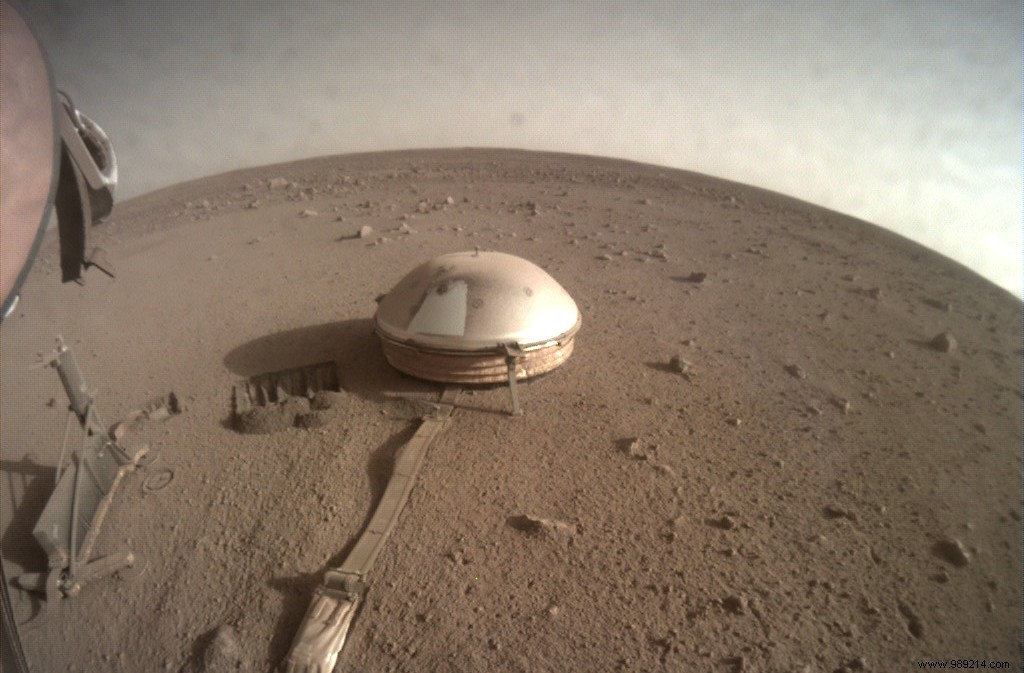NASA's InSight lander recently detected its three strongest "Marsquakes" to date, potentially giving scientists an even clearer picture of inside the red planet.
The US InSight mission, landed in November 2018 on the western side of an expanse of lava called Elysium Planitia, at the Martian equator, aims to detect tiny waves earthquakes crossing the lower layers of the red planet. Decrypted, this data allows researchers to learn more about its internal composition. Recall that does not have tectonic plates like the Earth. On the other hand, it offers seismically active regions capable of causing rumblings.
On site, Insight has already detected more than 500 of these earthquakes. Until recently, the two largest recorded earthquakes were magnitudes 3.6 and 3.5, both triggered from Cerberus Fossae, which concentrates a series of semi-parallel faults. Two other earthquakes of magnitude 3.3 and 3.1 emanating from the same region were also detected on March 7 and 18. These detections therefore suggest that Cerberus Fossae is an important center of seismic activity, but it is obviously not the only one.

On August 25, Insight reportedly spotted tremors of magnitude 4.2 and 4.1 , then detected another earthquake of magnitude 4.2 on September 18, as the lander celebrated its 1000th Martian day.
The InSight team is still studying this latest earthquake, but the events of August 25 have been partially characterized. That of magnitude 4.2 came in particular from a region located about 8,500 kilometers from InSight (much further than Cerberus Fossae, located about 1600 km from the lander). This is the farthest earthquake the lander has ever detected, NASA officials said.
The epicenter of this earthquake, however, is still uncertain. “A particularly intriguing possibility would be Valles Marineris, the epic canyon system that outlines the Martian equator” , the researchers wrote on Wednesday. “The approximate center of this canyon system is 9,700 km from InSight” .
For its part, the magnitude 4.1 quake of August 25 occurred much closer to the lander, about 925 km .
In addition, and to the surprise of scientists, the earthquakes of August 25 also differentiated. The magnitude 4.2 one would have been dominated by slow low-frequency vibrations, while fast high-frequency vibrations characterized the magnitude 4.1 one. This is good news for seismologists. Indeed, the recording of different types of seismic waves will be able to provide more information on the internal structure of the planet.
In this sense, significant progress has already been made. A few months ago, NASA relied on the mission to draw up a first map of the internal structure of Mars by evaluating the changes in speed and direction of these waves during their dispersion across the planet.